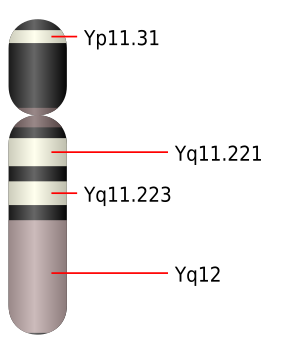Molecular anthropology
Study of human evolution using molecular techniques
Molecular anthropology is a field of anthropology that uses molecular biology techniques to study the genetic makeup of human populations. This discipline provides insights into the evolutionary history of humans, their migration patterns, and their relationships with other species, such as Neanderthals.
Overview
Molecular anthropology employs DNA analysis to trace the lineage and evolutionary history of humans. By examining genetic markers in mitochondrial DNA (mtDNA), Y-chromosome DNA, and autosomal DNA, researchers can infer the genetic relationships between different human populations and their ancestors.
Mitochondrial DNA
Mitochondrial DNA is inherited maternally and does not recombine, making it a valuable tool for tracing maternal lineage. The mitochondrial genome is relatively small and evolves rapidly, allowing for the study of recent evolutionary events.
Y-Chromosome DNA
The Y chromosome is passed from father to son and is used to trace paternal lineage. Like mtDNA, the Y chromosome does not undergo recombination, which makes it useful for studying paternal ancestry and migration patterns.
Autosomal DNA
Unlike mtDNA and Y-chromosome DNA, autosomal DNA is inherited from both parents and undergoes recombination. This type of DNA provides a more comprehensive view of an individual's ancestry and can be used to study genetic diversity within and between populations.
Applications
Molecular anthropology has been instrumental in understanding human evolution and migration. It has helped to:
- Trace the "Out of Africa" theory, which posits that modern humans originated in Africa and migrated to other parts of the world.
- Identify genetic admixture between modern humans and archaic humans, such as Neanderthals and Denisovans.
- Study population bottlenecks and expansions, which have shaped the genetic diversity of contemporary human populations.
Human Evolutionary Studies
Molecular anthropology has provided evidence for the interbreeding between modern humans and Neanderthals. Analysis of Neanderthal mtDNA and nuclear DNA has shown that non-African human populations have a small percentage of Neanderthal ancestry.
Techniques
Molecular anthropologists use various techniques, including:
- Polymerase chain reaction (PCR) to amplify DNA samples.
- Sequencing technologies to determine the order of nucleotides in DNA.
- Bioinformatics tools to analyze genetic data and infer evolutionary relationships.
Challenges
The field faces challenges such as:
- Degradation of ancient DNA, which can complicate analysis.
- Ethical considerations in the study of human genetic material.
- Interpretation of genetic data in the context of complex human histories.
Related pages
Transform your life with W8MD's budget GLP-1 injections from $125.
W8MD offers a medical weight loss program to lose weight in Philadelphia. Our physician-supervised medical weight loss provides:
- Most insurances accepted or discounted self-pay rates. We will obtain insurance prior authorizations if needed.
- Generic GLP1 weight loss injections from $125 for the starting dose.
- Also offer prescription weight loss medications including Phentermine, Qsymia, Diethylpropion, Contrave etc.
NYC weight loss doctor appointments
Start your NYC weight loss journey today at our NYC medical weight loss and Philadelphia medical weight loss clinics.
- Call 718-946-5500 to lose weight in NYC or for medical weight loss in Philadelphia 215-676-2334.
- Tags:NYC medical weight loss, Philadelphia lose weight Zepbound NYC, Budget GLP1 weight loss injections, Wegovy Philadelphia, Wegovy NYC, Philadelphia medical weight loss, Brookly weight loss and Wegovy NYC
|
WikiMD's Wellness Encyclopedia |
| Let Food Be Thy Medicine Medicine Thy Food - Hippocrates |
Medical Disclaimer: WikiMD is not a substitute for professional medical advice. The information on WikiMD is provided as an information resource only, may be incorrect, outdated or misleading, and is not to be used or relied on for any diagnostic or treatment purposes. Please consult your health care provider before making any healthcare decisions or for guidance about a specific medical condition. WikiMD expressly disclaims responsibility, and shall have no liability, for any damages, loss, injury, or liability whatsoever suffered as a result of your reliance on the information contained in this site. By visiting this site you agree to the foregoing terms and conditions, which may from time to time be changed or supplemented by WikiMD. If you do not agree to the foregoing terms and conditions, you should not enter or use this site. See full disclaimer.
Credits:Most images are courtesy of Wikimedia commons, and templates, categories Wikipedia, licensed under CC BY SA or similar.
Contributors: Prab R. Tumpati, MD





